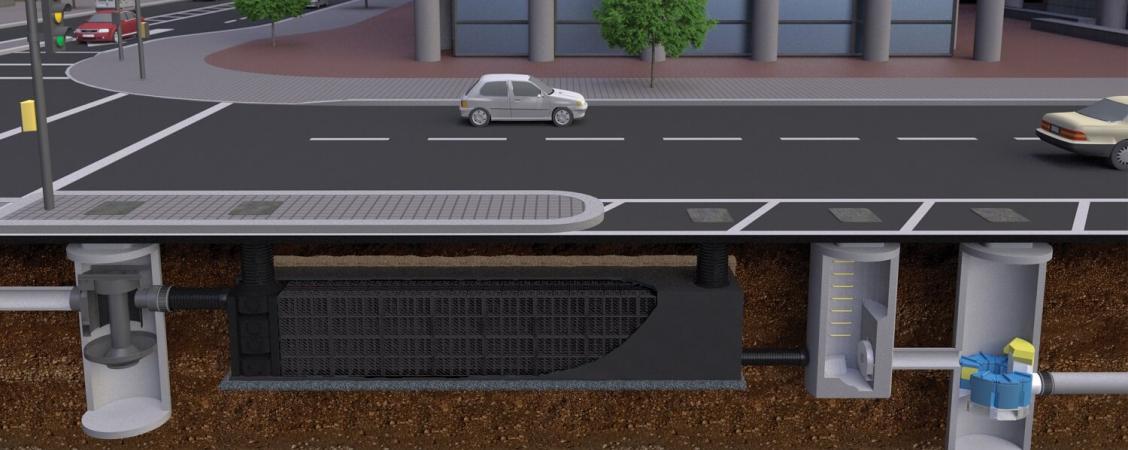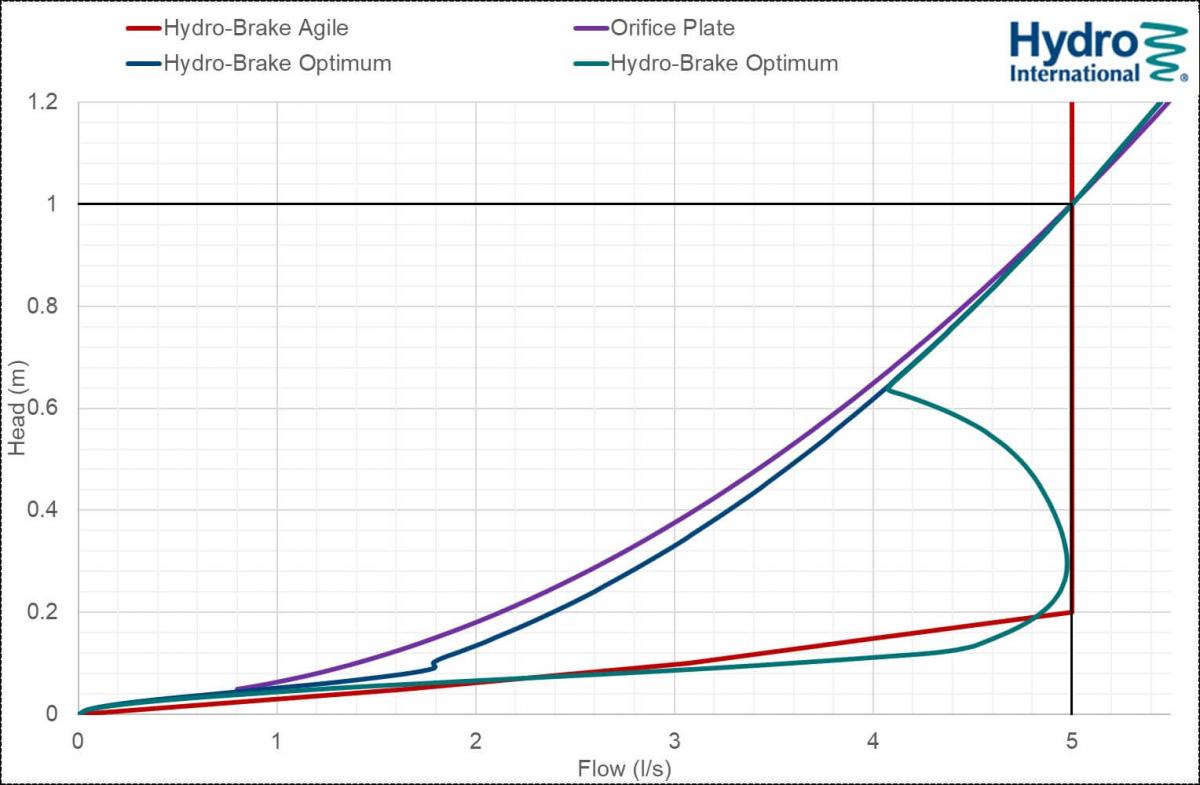
The role of storage in flood protection
When it comes to sustainable drainage, flow controls and storage are inextricably linked; substituting flow controls can overwhelm the storage and increase flood risk.
Introduction
With every new construction project, whether it be a redevelopment or a new build, it is common that a discharge consent from the site will be imposed. By imposing discharge consents, excess flow volumes need to be either returned to the natural water cycle (through evapotranspiration and infiltration) or attenuated within some form of storage.
As such, flow control cannot be considered without also considering storage.
There are two main types of storage available; above ground and below ground. Above ground storage is often vegetated, and includes structures such as ponds, swales and detention basins. Below ground storage comprises structural volumes, such as concrete storage tanks and plastic storage crates.
Selection of the storage and attenuation structure can be dependent on, but not limited to:
- Available above ground surface area
- Soil conditions and infiltration rates
- Density of building or construction built on site
- Preferred future maintenance regimes
- Required storage volumes
Regarding the required storage volumes, this will depend on the flow control method used to restrict the site runoff to the consented discharge flow rate and the flow control’s hydraulic characteristic.
The main consideration for the flow control is not the design flow rate or the design head level, but the outflow rate of the control up to that design flow rate.
Orifice plates and throttle pipes
Flow control devices such as orifice plates and throttle pipes, whose outflow rate increases in proportion to the upstream head level, will prematurely fill a storage volume as the maximum discharge flow rate is not achieved until the top design point.
For those sites where the predominant flood risk is downstream of the control, such as Critical Drainage Areas, and where there is plenty of space on-site for water storage, this effective throttling can be advantageous to the overall catchment.
These devices do benefit, however, from being passive, have no moving parts and are self-activating.
Mechanical devices
Contrary to the orifice plate, pumps and mechanically operated flow controls achieve a near constant flow rate regardless of the head level upstream. This means the flow control will discharge the flow at the maximum flow-rate possible for the majority of the head level.
For those sites where there is very little space on site for water storage, this effective discharge can be advantageous as it reduces the storage volume to the absolute minimum. These controls do, however, introduce power requirements or a need to maintain the moving parts.
Vortex flow controls
Vortex flow controls offer a compromise solution as they provide the benefits of passive, self-activating controls with no moving parts and can provide good approximations of the throttling characteristics of an orifice plate or the reduction in storage volumes of a near-constant discharge device. At the lower head levels of the flow controls hydraulic characteristic, the design flow-rate can be achieved.
This, therefore, reduces the storage volume required by not prematurely attenuating flow volumes. The future operation and maintenance costs of the chosen flow control are also reduced.

The risk of substituting flow controls
Once a flow control and its hydraulic characteristic has been selected for a project, changing or substituting the flow control can increase the risk of flooding as the storage volume installed may then be not sufficient.
This relationship between storage volumes and flow controls can also become more complicated if variable discharge consents are applied to different rainfall return periods.
Following on, you then need to decide on the type of storage structure that is best suited for the site.
